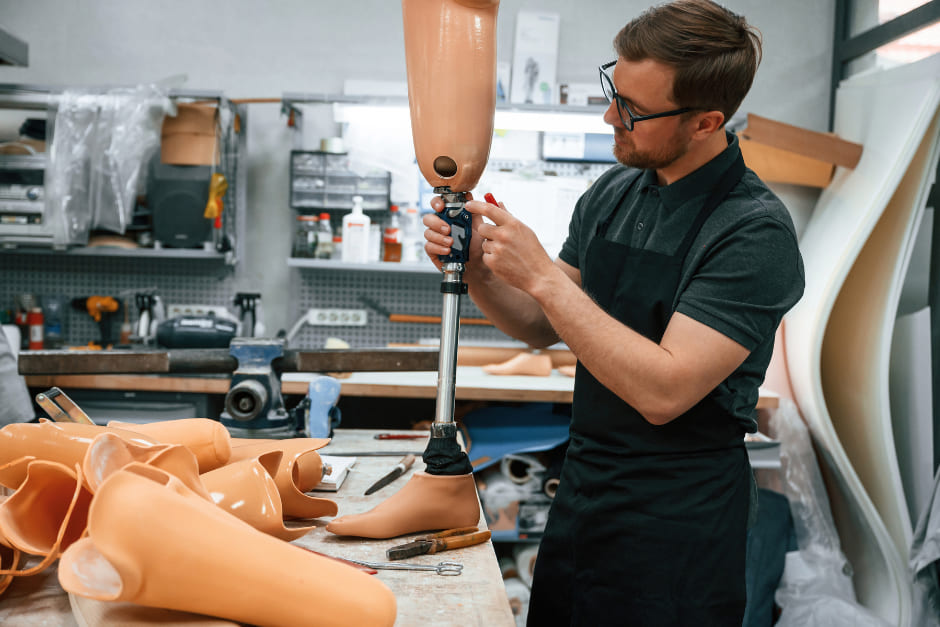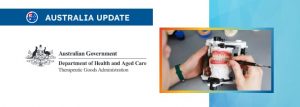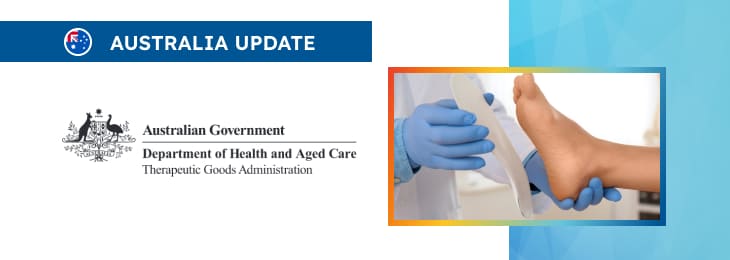The new article further describes in detail the specific approach to be followed when making a submission, highlighting the key points to be considered by the parties involved.

Table of content
The final article of the cycle clarifies certain specific regulatory matters associated with submissions, such as the applicability of transitional provisions or modifications to submissions and the way they should be introduced.
The Therapeutic Goods Administration (TGA), the Australian regulating authority in the sphere of healthcare products, has published a guidance document dedicated to notifications in the content of patient-matched and custom-made medical devices. The document provides an overview of the applicable regulatory requirements, as well as additional clarifications and recommendations to be taken into consideration by medical device manufacturers and other parties involved in order to ensure compliance.
At the same time, provisions of the guidance are non-binding in their legal nature, nor are they intended to introduce new rules or impose new obligations. The authority also reserves the right to make changes to the guidance and recommendations provided therein, should such changes be reasonably necessary to reflect corresponding amendments to the underlying legislation.
Transition Plan Details
Under the Australian regulatory framework for medical devices, custom-made medical devices are exempt from inclusion in the Australian Register of Therapeutic Goods (ARTG), though they are still subject to regulation.
Manufacturers and sponsors of such devices must comply with several TGA regulatory requirements, including:
- Ensuring that the devices meet all relevant Essential Principles, such as providing adequate labeling and instructions for use;
- Complying with advertising requirements;
- Submitting annual reports;
- Reporting any adverse events associated with the device.
On 25 February 2021, new definitions were introduced for medical devices that are personalized for an individual patient or health professional. Under these updated regulations, most devices that previously met the definition of a custom-made medical device now fall under the category of a Patient-Matched Medical Device (PMMD).
Starting 1 July 2029, devices meeting the definition of patient-matched medical devices will no longer be exempt from inclusion in the ARTG. Manufacturers or sponsors can refer to TGA guidance to determine whether their custom-made devices now qualify as PMMDs.
However, PMMDs supplied in low volumes – defined as five or fewer per financial year – remain exempt from both the transition notification requirement and ARTG inclusion.

Transition Notification Period for Patient-Matched Medical Devices
The transition notification period for all PMMDs is open until 1 November 2024. If a manufacturer or sponsor intends to supply a PMMD on or after 1 July 2029, it is mandatory to notify the TGA of the intention to transition by 1 November 2024.
This transition notification can be completed by confirming in the submission form that the device meets the definition of a PMMD. By selecting “Yes” in the appropriate section of the form, the device is formally notified for transition.
If a notification has already been submitted for the device, this can also be indicated on the form. After 1 July 2029, all PMMDs (including those already notified) must be included in the ARTG before they can be imported into, supplied within, or exported from Australia unless they meet exemption criteria or are otherwise approved by the TGA.
Detailed information regarding the process for medical device inclusion in the ARTG can be found on the TGA website.
Declaration and Submission of the Notification
When finalizing the notification form, the manufacturer or sponsor is required to declare that all submitted information is accurate and true by selecting “I agree” before submitting the form. Any information entered can be amended before final submission by using the “Save” button located at the bottom of the form.
This action will save the form as a draft, allowing the submitter to return to the “Draft” tab on the dashboard and make changes at any time. Once “Submit” is selected, the information will be sent to the TGA, and the selection of “I agree” serves as a formal declaration under Australian law.
According to the instructions provided, it is important not to use the “Back” or “Refresh” functions on the web browser while the notification is processing, as doing so may result in duplicate submissions.
After Submitting a Notification
After a notification has been submitted, the manufacturer or sponsor will be redirected to a confirmation page.
From this page, it is possible to navigate back to the dashboard, where submitted notifications can be viewed under the “Submitted” tab. A screenshot of the dashboard showing the “Submitted” tab is provided in the guide for reference.
Withdrawing a Notification
Notifications that are no longer accurate or in use can be withdrawn by accessing the “Submitted” tab on the dashboard. Once the notification to be withdrawn is located, the user can click the arrow on the far right and select “Withdraw”.
It is important to note that withdrawn notifications are not deleted but are archived for auditing purposes. These notifications can be reactivated at any time if needed.
Modifying a Notification
If updates are required for an already submitted notification, the manufacturer or sponsor can locate the notification in the “Submitted” tab on the dashboard, click the arrow on the far right, and select “Edit”. Any modifications to the notification will be tracked for auditing purposes.
Upon completing any updates, the submitter will need to select “Submit” again, formally resubmitting the information to the TGA. By selecting “I agree” and submitting the updated form, the submitter is again making a formal declaration under Australian law.
Further Information and Resources
For more guidance and resources related to the regulation of personalized medical devices, the following documents and services may be of assistance and thus should be considered by the parties involved:
- Guidance on the regulation of personalized medical devices;
- Frequently asked questions about personalized medical devices;
- An overview of refinements to the regulation of personalized medical devices, which were made in August 2021.
For general advice or specific inquiries regarding the regulation of medical devices, manufacturers or sponsors can contact the Medical Devices Information Unit via email. If additional assistance is required for submitting a notification, the TGA team can be reached for personalized support.
Conclusion
In summary, the present guidance issued by the TGA provides detailed and precise instructions on the way a notification should be submitted, highlighting specific details that require additional attention.
How Can RegDesk Help?
RegDesk is an AI-powered Regulatory Information Management System that provides medical device companies with regulatory intelligence for over 120 markets worldwide. It can help you prepare and publish global applications, manage standards, run change assessments, and obtain real-time alerts on regulatory changes through a centralized platform. Global expansion has never been this simple.


